Despite its status as a far-right dictatorship in the 1940s, Portugal never really entered the conflict in World War II. Prime Minister António de Oliveria Salazar led the country through a balancing routine as hypocritical as it was successful: for the most part, the Portuguese were spared any contact with the war. There was, however, a notable exception.
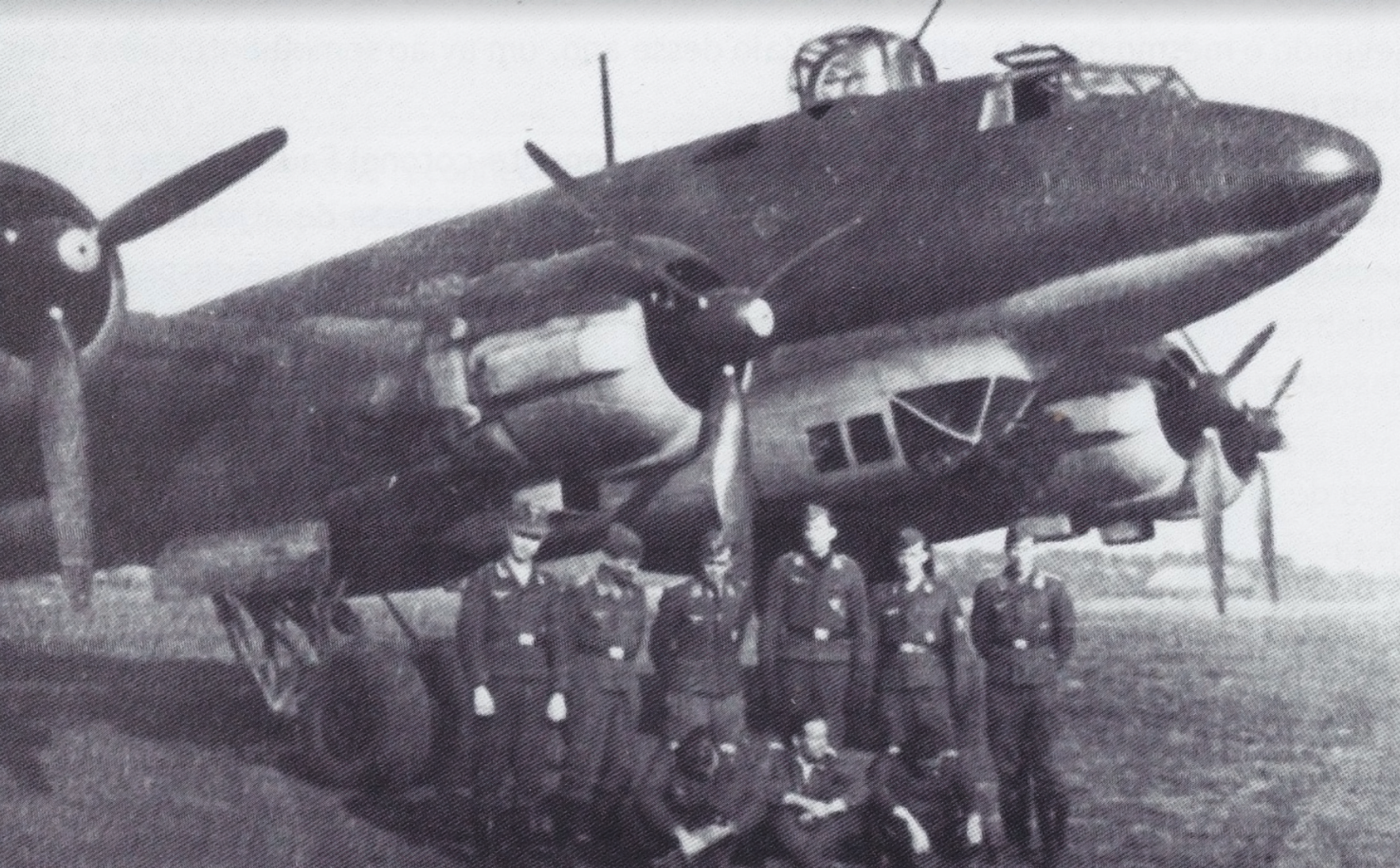
The day was July 9th, 1943. A convoy of Allied ships traveled south along the Portuguese coast, headed for the Mediterranean, where the Allies intended to begin an attack on Sicily. An escort of two British fighters ensured the safety of the mission, until a group of four German bombers flew in from Nazi-occupied France to intercept, and hopefully sink, the supply ships. The aerial battle lasted a little over an hour, after which the German bombers were forced to retreat—all but one, that is, which had been shot down in the cliffs near Aljezur.
Aljezur, at the time, was a town of a little over 5.000 people whose only contact with the war came in the form of radio waves. Luís Proença, who was six years old at the time, remembers spending evenings in the community center huddled around the radio, following the news of the war on BBC. The reports, Proença said, overwhelmingly favored the Allies. “We saw the Germans as enemies […] so it was almost like a victory [when the plane crashed]. It was the enemy who had fallen.”
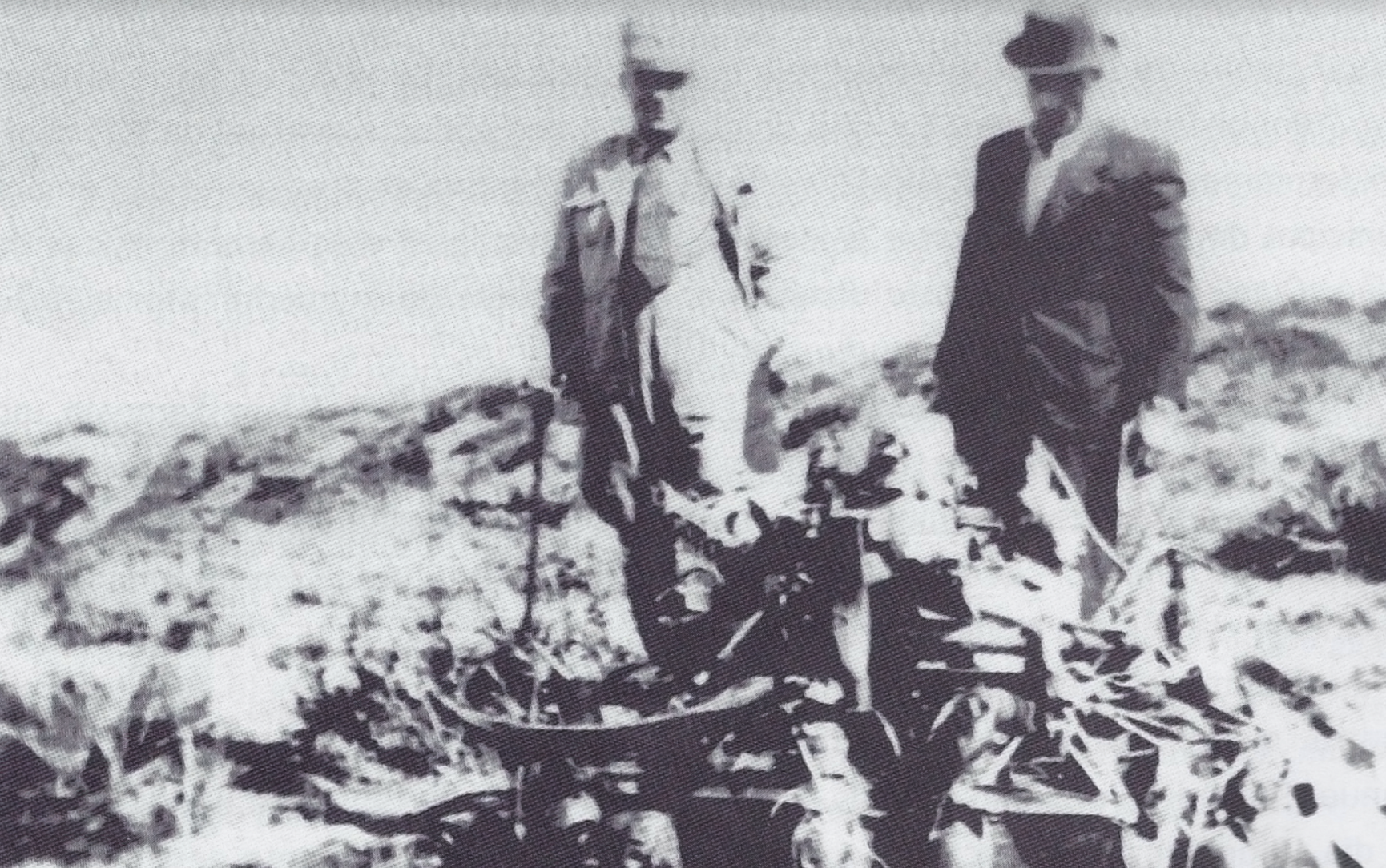
Enemy or not, the townspeople sprung to action. “[My grandfather] handled everything, ” Ernesto Silva said of Vitorino Cuco, the leader of the coast guard who first reached the wreck. “First, because it was his professional duty; second, because he was a good person.”
Cuco had hoped for a rescue, but the wrecked plane burned so fiercely it couldn’t be approached. Later, when the time came to remove the bodies, Cuco led a small team through the motions. When a transport truck couldn’t make it up the cliffs, they used an ox cart. When they couldn’t reach one of the bodies, they tied ropes into a lasso and improvised. Despite the hellish scene, they never wavered. They had decided to move the bodies into the local church, and they would succeed no matter the cost.
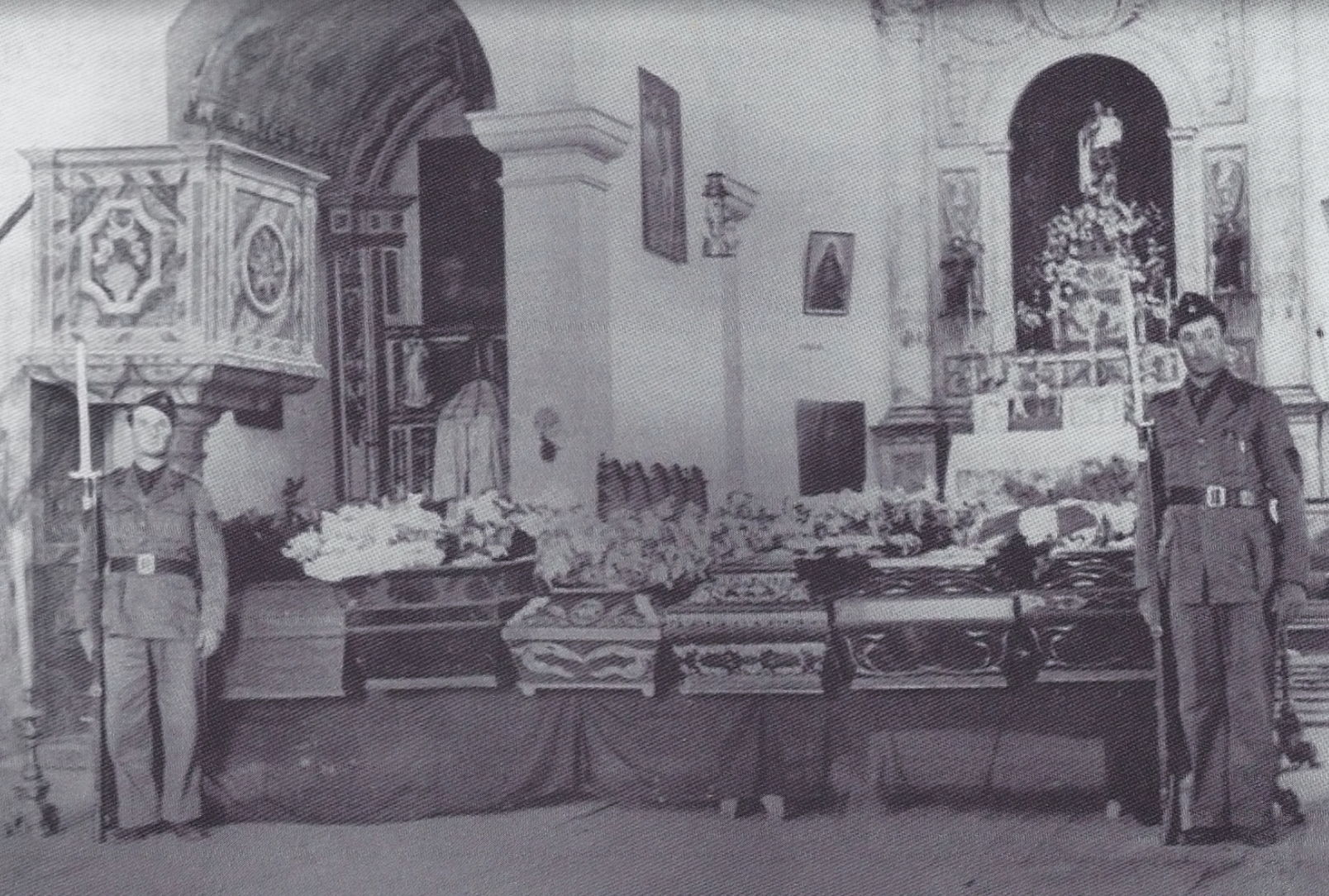
In a society that’s come to conflate funerals with celebratory ceremonies, these burned soldiers must have created an agonizing dilemma. Emotionally, instinctually, we want nothing more than to lash out, shun the dead men. Rationally, however, we perceive ourselves as guardians of an elusive moral high ground, a position that forbids us from flinging these bodies into a ditch and calling it a day.
By the time the Portuguese capital was telegraphed about the situation, a full 10 hours after the crash, the seven Nazi aviators were already safely enshrouded in the church, just waiting for seven caskets to arrive to carry them underground. They wouldn’t be accurately identified until later that day, when the first German representative arrived from the Lisbon embassy. Many would follow over the next two days. The people of Aljezur, who had never seen a Nazi in the flesh, were suddenly bumping shoulders with German ambassadors, representatives for the Nazi party and the Hitler Youth, official photographers, and at least one Protestant pastor.
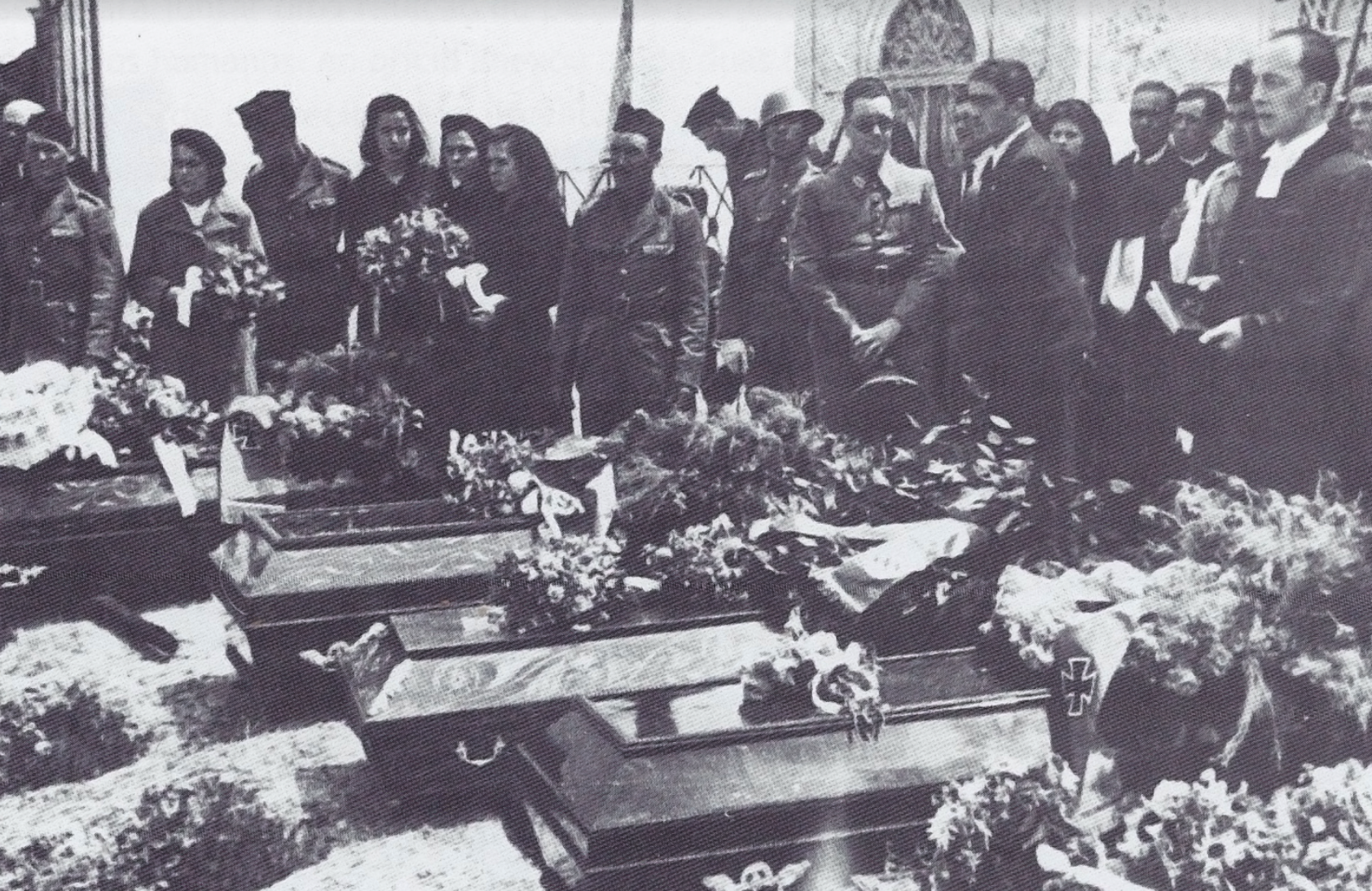
The funeral took place on the 11th. The seven bodies, in seven mismatched caskets (mahogany, lined with lead) brought in from a nearby town, were buried in the local cemetery, the graves identified with a simple wooden cross. There were military honors and Nazi salutes, after which the German entourage drove back to the embassy, satisfied that their brothers-in-arms had been respectfully buried.
Yet Nazi Germany wasn’t done with Aljezur.
Five months after the funeral, the mayor received a notification: the Führer himself wished to award him, and three other men, the Order of the German Eagle, a diplomatic award usually given to foreign diplomats for their sympathy for the Nazi cause. Francisco Albano de Oliveira, town mayor, Amândio da Luz Paulino, deputy mayor, José Viriato França, leader of the local cell of the Portuguese Legion, and Vitorino Cuco, leader of the local coast guard, would go on to receive their decorations, composed of an insignia and a diploma signed by none other than Adolf Hitler, in late December.
It was one thing to bury a dead body; and another, completely different, to have Hitler sign a glorified thank-you note. Ernesto Silva, grandson of coast guard Vitorino Cuco, said his grandfather was downright embarrassed by the decoration. “My grandfather never liked this,” he said in an interview, “and he always said there was no honor in being decorated by an evil man.” All he’d done was handle the bodies of his fellow men with dignity and respect—he’d never meant to go down in history as a friend to the Nazi regime.
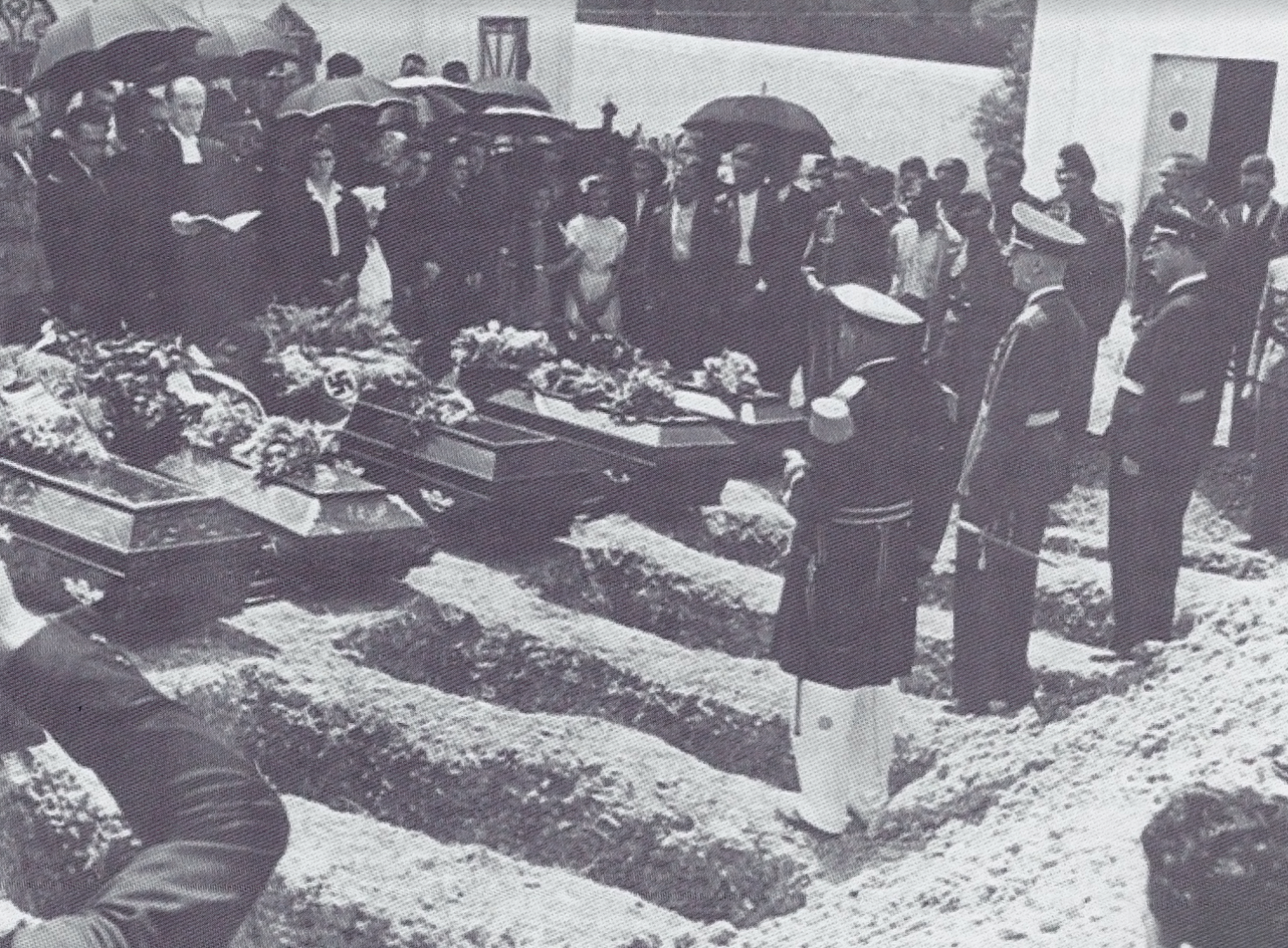
At best, we could call this episode a miscommunication; at worst, a deliberate attempt to politicize the altruism of unwilling participants. When the people of Aljezur stepped up to the task of burying seven young men who’d fallen out of sky, they were simply upholding a millenia-old form of basic human decency. They wished to honor the men; it was the Germans who used the opportunity to honor the regime.
Such is the risk associated with the choice to handle the controversial dead, and it may very well be the reason behind our widespread hesitation to bury, and therefore memorialize, individuals whose actions we deem atrocious. It would bruise us, terribly, to have our kindness misconstrued. It would enrage us, perhaps most of all, to be thought of as allies to violent regimes and ideologies.
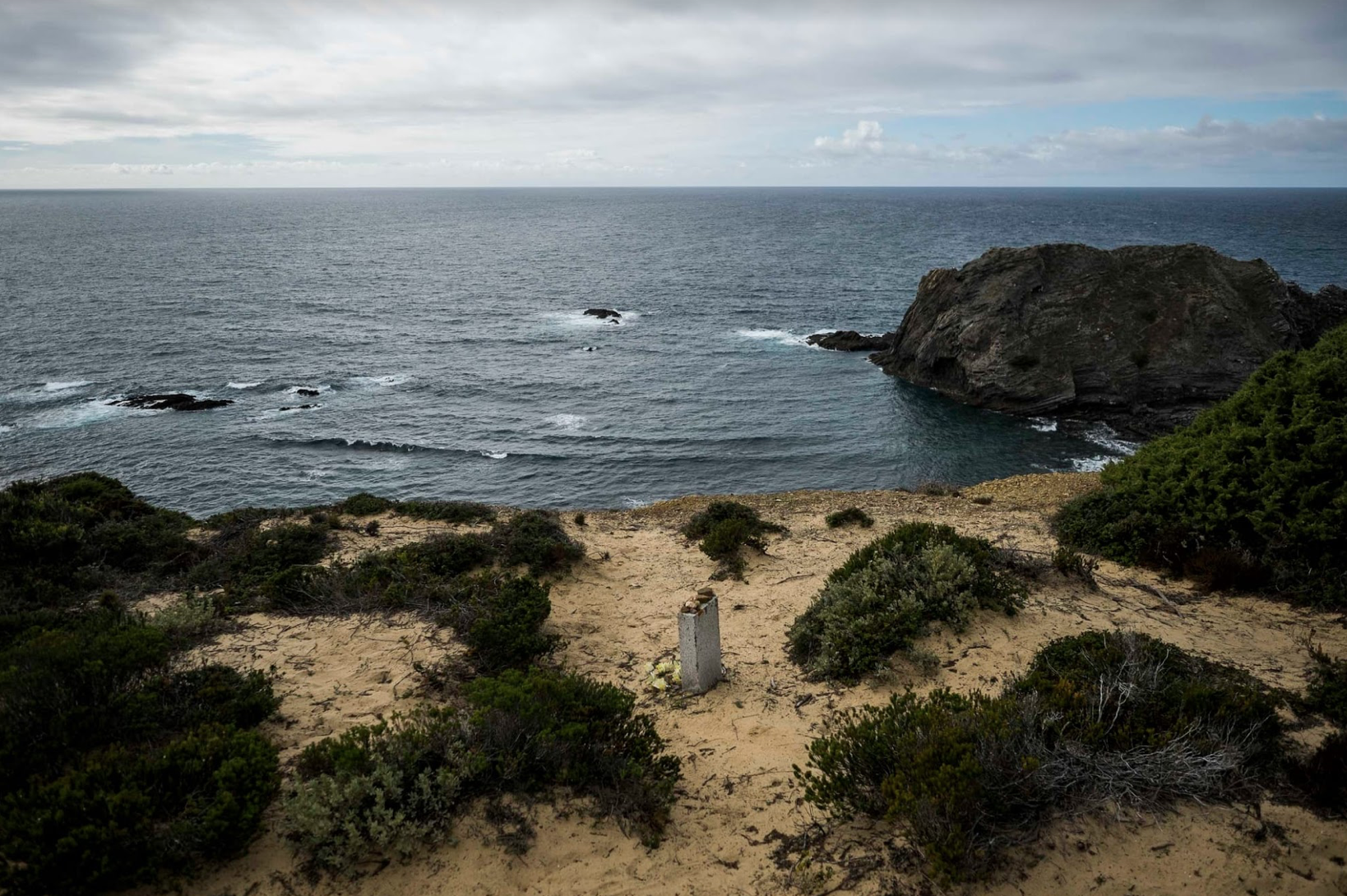
In a video entitled Caring for the Bodies of Terrorists, our mortician Caitlin Doughty explored the postmortem political crises brought about by the deaths of Osama bin Laden, a founder of al-Qaeda, and Tamerlan Tsarnaev, one of the two men responsible for the Boston Marathon bombings. In the case of bin Laden, a perceived shortage of countries willing to receive the body led to the controversial decision to bury it at sea; in the case of Tsarnaev, it was protesters and local cemeteries actively (and sometimes violently) rejecting the body that caused it to be sent out of state, for burial in a private cemetery.
As a result, those who do take the risk of burying these unpopular dead have come to lean on the power of disclaimers. A representative from Islamic Funeral Services of Virginia, the organization that provided the plot for Tamerlan Tsarnaev’s burial, said, “we strongly disagree with his violent actions, but that does not release us from our obligation to return his body to the earth.” Peter Stefan, the funeral director who handled the matter, echoed the thought: “the fact that I’m burying him doesn’t mean that I’m condoning anything. I’m just burying a dead, human body. If you take an oath to bury the dead, you do it.”
There’s no guarantee that the world at large will respect the sentiment behind these disclaimers—no guarantee that ultraviolent souls won’t flock to these grave sites in search of validation, or that heartbroken members of the public won’t descend upon them in righteous anger. There’s no ensuring that these gravesites will ever blend into the communities that harbor them.
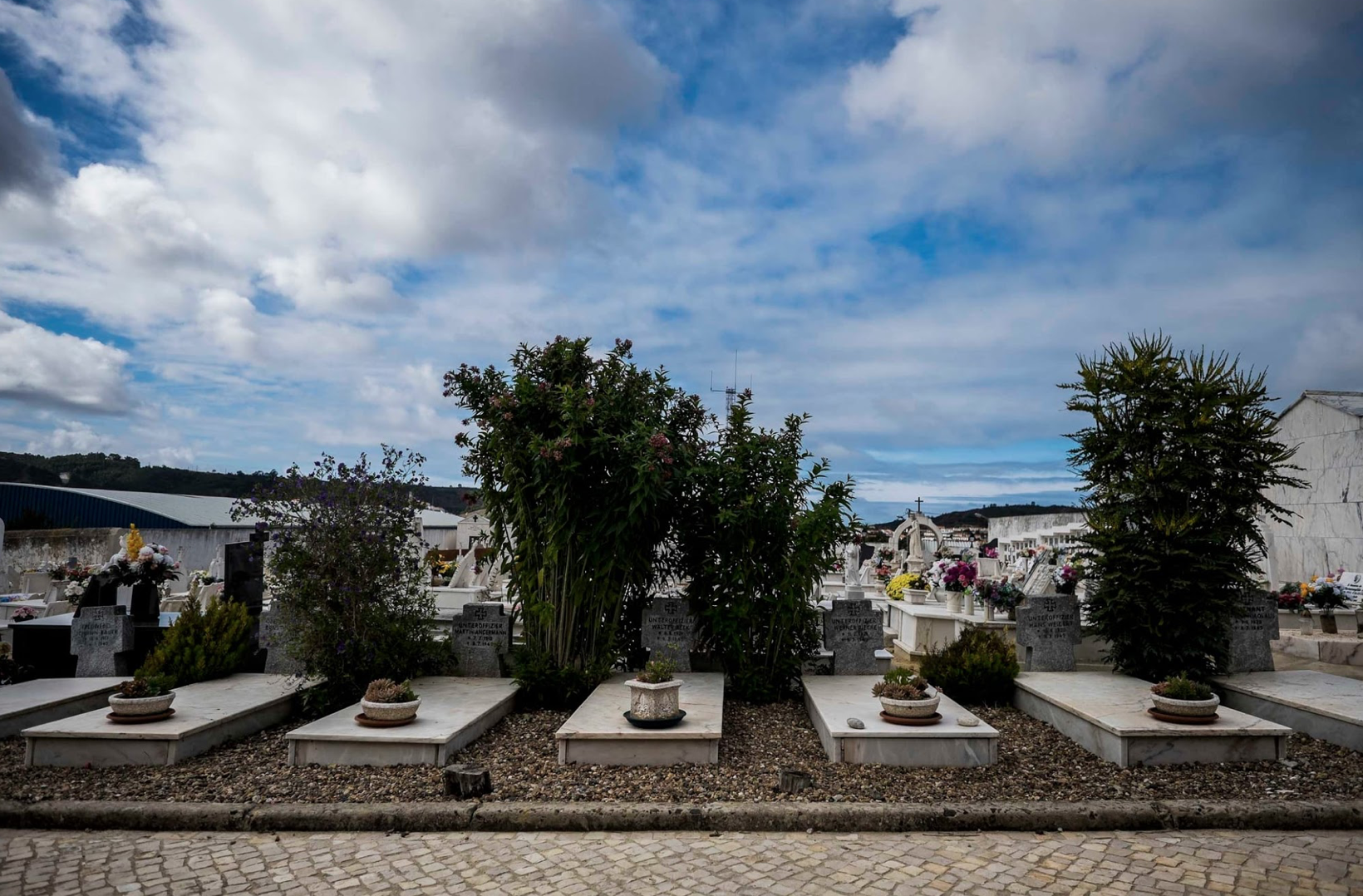
The town of Aljezur was lucky. Today, seven headstones mark the spot where seven wooden crosses used to be. The aviators remain undisturbed, but the space they occupy in the local cemetery has acquired a new meaning, one that far transcends their individual names. It is on their resting place that locals gather, once a year, to mourn the lives lost in the World Wars. They are Portuguese, German, and British, and somewhere in the commonalities between their mother tongues they’ve agreed to reject the Nazi version of the story. Fascists are not welcome. Those willing to learn from history, however, are.
In the end, perhaps this is all we can hope for: a future where we can reconcile the human need for a respectful burial with the very real pain caused by some of the dead we choose to welcome back into our communities. The learning process is bound to be steep, and painful, and contradictory at times.So we might as well start now.
